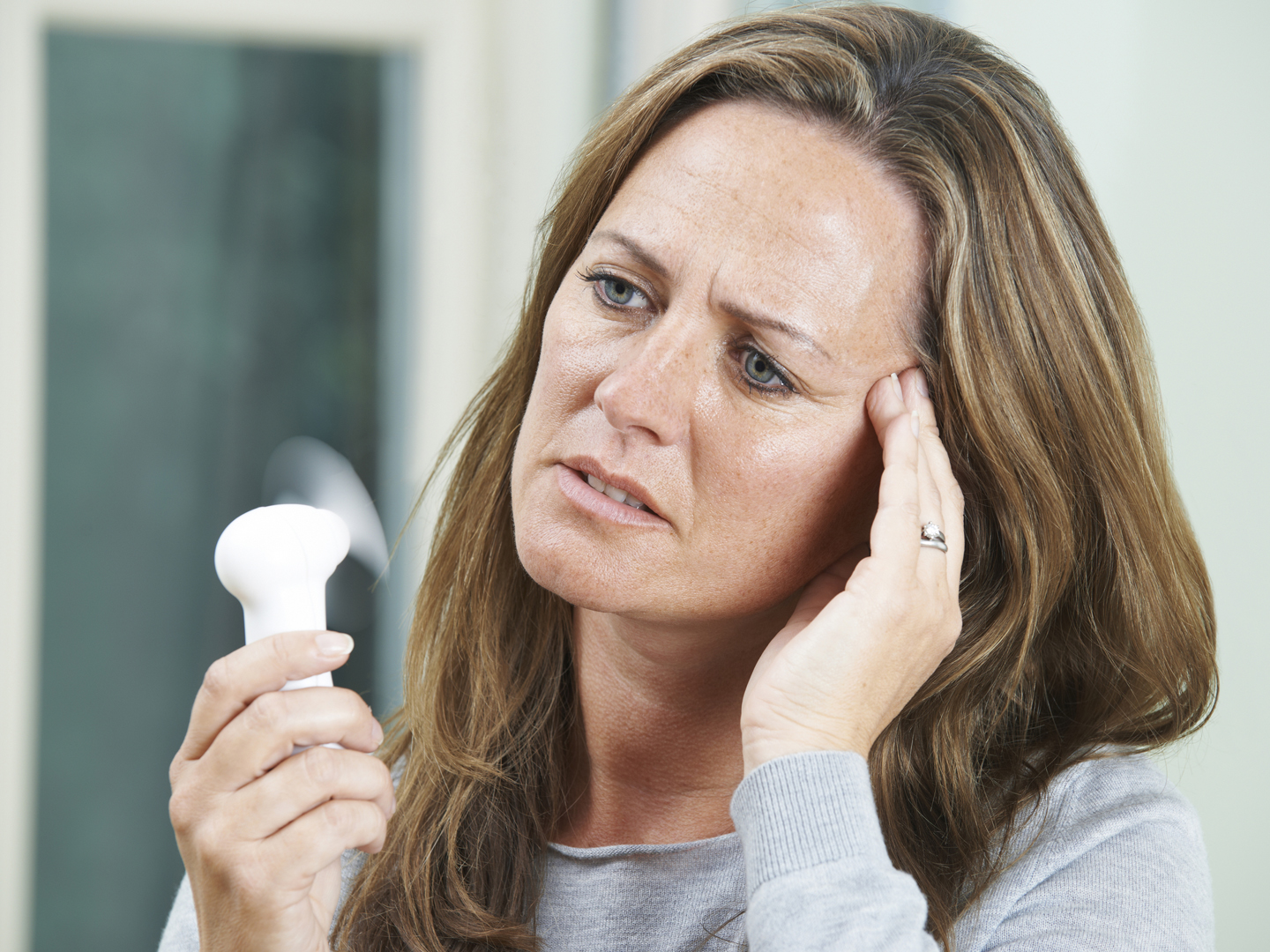Hot Flashes: How Long?
I’ve had hot flashes for years now – they began even before I reached menopause. I understand that having them for such a long time could be a health risk. How so?
Andrew Weil, M.D. | October 10, 2016

Recent research from the University of Pittsburgh contradicts the long-standing view that hot flashes typically present as menopause approaches, last a few years, and then disappear. Although there have been reports of exceptions to this rule, such as women who are still contending with hot flashes into their 70s, the variation in women’s experiences has not been well investigated. Here’s a summary of the latest findings:
- In 18.4 percent of women, hot flashes begin about 11 years before menopause and stop after the last menstrual period. This pattern was more common among obese women, those whose health was poorer compared to others in the study, and those who had symptoms of depression and anxiety as well as women who reached menopause at an older than usual age.
- Another 29 percent of women begin to experience hot flashes after their final menstrual period. This category included women who had a lower body mass index, those who smoked and African-Americans.
- About 25 percent of the women participating never experienced hot flashes. This pattern was most common among Chinese women.
- And an unlucky 25 percent developed severe hot flashes about 11 years before menopause, which continued for 15 years or more afterward. These women were more likely to be African American, as well as women in poorer health than others in the study. This group also included women who had more symptoms of anxiety and depression, those who were less educated and women who consumed more alcohol. African Americans, however, constituted only 40 percent of the women who reported this long running pattern of hot flashes. The rest were white, Asian and of other ethnicities.
The study, which was funded by the National Institutes of Health, included 1,455 women who reported on their hot flashes for a median of 15 years.
Earlier studies have suggested that higher frequency of hot flashes is linked to high cholesterol, both LDL (“bad”) and HDL (“good”) cholesterol. What that means for a woman’s heart health is unclear, since high LDL could suggest an increased risk of heart problems, while high HDL is associated with a lower risk.
Dealing with hot flashes remains a major problem for many midlife (and older) women. Unfortunately, the only reliable relief is hormone replacement therapy (HRT), which for most women poses unacceptable risks of breast cancer, stroke, and heart attack. As an alternative, I recommend low doses of bio-identical hormones for women who need short-term relief from frequent and intense hot flashes. While these hormones produce fewer side effects than conventional ones, they present the same risks. The North American Menopause Society notes that cognitive-behavioral therapy and clinical hypnosis have been shown to be effective non-medication measures for reducing hot flashes.
You also might consider these options:
- Black cohosh (Cimicifuga racemosa): This herb is safe and can work well but isn’t effective for everyone.
- Whole soy foods: The phytoestrogens in soy may help. Try two servings daily of whole (organic) soy foods such as tofu, tempeh, edamame, soy nuts, or soymilk.
Andrew Weil, M.D.
Source:
Ping G. Tepper et al, “Characterizing the trajectories of vasomotor symptoms across the menopausal transition.” Menopause, July 11, 2016, doi: DOI: 10.1097/GME.0000000000000676









